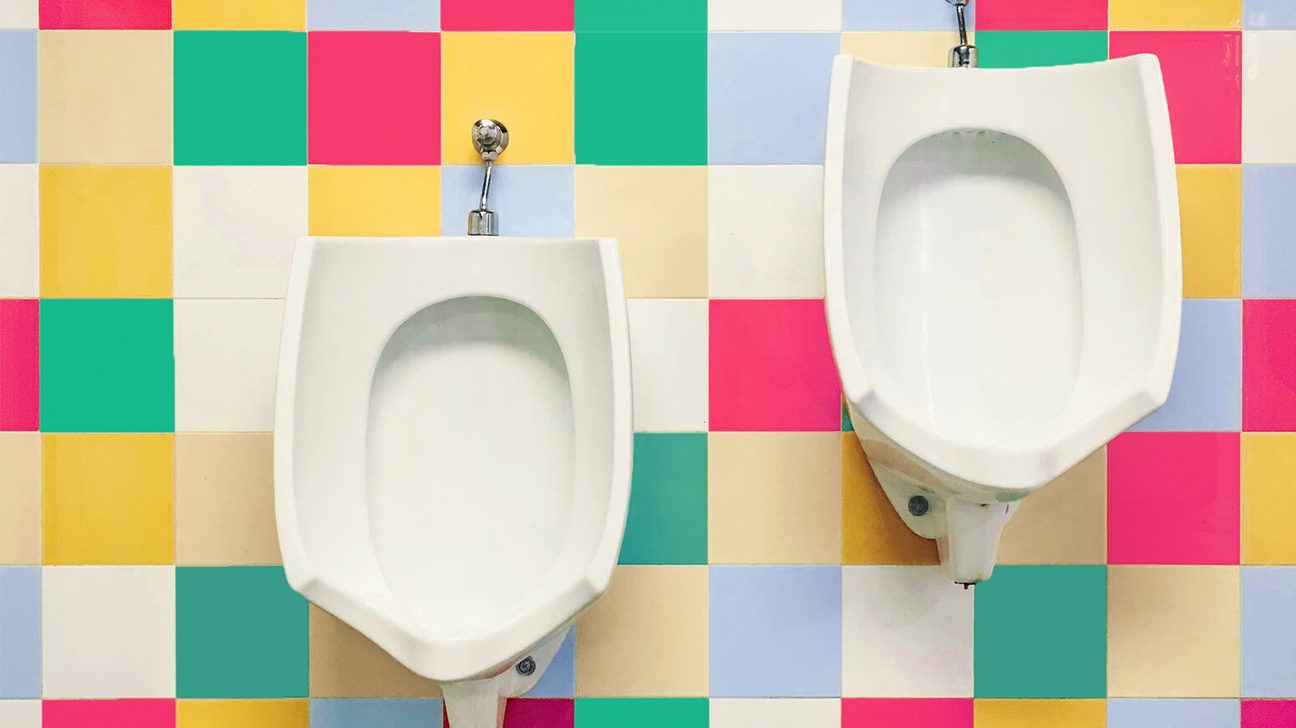“In a world where movies are 3 hours long and large sodas are upsold for only a quarter more, a hero will rise above the bathroom lines and stay in her seat until the final credits roll…”
You may recognize that narration format from action movie previews, but you also may not — especially if you’re anything like me.
I normally dip out mid-preview to use the bathroom, slipping back just in time for the last loud movie trailer to end while artfully popping the top of my smuggled-in seltzer.
The idea is simple: a just-in-case pee (an attempt to go when I don’t actually have the urge) in the hope that squeezing out any available urine will prevent me from having to use the bathroom during a movie or at another inconvenient time.
News flash: This does not work. And — surprise! — my carbonated contraband and attempts to limit my fluid intake before movies were really just making the problem worse.
After a mystery pain lead me to see a pelvic floor specialist (thank you, Alex!) who reviewed some “bladder best practices,” I realized I’d been using my bladder all wrong.
Did I happen to drink a lot of seltzer?, the doctor wanted to know. Was I not drinking enough (noncarbonated) water? And the kicker: Did I ever use the bathroom even though I didn’t feel a strong urge to go? It me.
So, reader, urine luck. (Sorry, not sorry for the pun.) Thanks to my tense pelvic muscles, I now have a world of information about bladder health. Follow these tips to get set up for optimum bladder control.
Saying “small bladder!” with an apologetic shrug every time I detoured a car full of people to a rest stop or made a group wait was part of my life. So I was in for a real surprise when I found out that small bladders aren’t really a thing.
Generally, most people’s bladders can hold a whole soda can’s worth of liquid — much more than the shot-glass-size organ I’d imagined I had.
If you’re like me, these bladder facts should help correct bad bladder behaviors and clear up common misconceptions:
- While urination frequency can vary, people typically pee 4 to 10 times in a 24-hour period.
- It’s normal to pee every 3 to 4 hours, depending on your fluid intake.
- An average bladder can hold about 12 ounces, roughly the same amount as a can of soda.
- Bladder issues can affect everyone, whether you pee standing up or sitting down. Everyone should be mindful of bladder best practices and can do pelvic floor exercises to help prevent future issues.
I worked with CORE 3 Physical Therapy in East Norriton, Pennsylvania, to help diagnose my issues and used the research of owner Danielle Knippenberg as the foundation for these bladder best practices.
1. No more just-in-case peeing
Using the bathroom when your bladder isn’t totally full trains your bladder to send a signal that you need to urinate when there’s only a small amount of urine in it.
Your brain then begins to send you “full bladder” signals when it’s not full, causing you to feel like you have to pee more often.
2. Be aware of bladder irritants
If you think a bladder irritant may be the root of an issue, eliminate them from your diet and slowly reintroduce them to identify any that affect you.
Common bladder irritants include:
- coffee
- alcohol
- carbonated drinks (soda, seltzer)
- artificial sweeteners
- spicy foods
- citrus fruits and juices
- chocolate
- honey
- tomato-based foods
- milk
Alcohol and caffeinated drinks can also increase urine production.
3. Don’t do Kegels while peeing
Practicing pelvic floor exercises while urinating can weaken your muscles over time or damage your bladder and kidneys.
4. Fully relax your muscles while peeing
If you sit while peeing, actually sit — don’t hover over the toilet. You need to relax your pelvic floor to fully empty your bladder.
5. Stay properly hydrated
Don’t drink less water in an attempt to pee less. This makes urine more concentrated and can irritate your bladder.
6. Poop smarter, not harder
Avoiding constipation is important for a healthy bladder. When your bowels aren’t properly emptied, it can put pressure on your bladder. Don’t strain when pooping, and consider using a squatty potty.
And just so you know, if you TikTok too long on the clock, that’s more time with no support for your pelvic floor, which can also create issues.
Don’t assume frequent urination is something you just have to deal with. Once I saw the error of my urine-evacuating ways, I focused on bladder best practices: stopping preventive peeing, staying properly hydrated, and scaling back my seltzer intake.
Now I can sit through an entire movie without doing the whole “stepping on toes and knocking over popcorn and mumbling ‘Excuse me, I’m sorry’ through a crowded theater” thing.
If bladder issues are affecting your quality of life by causing you to change your activities or skip social events, make an appointment with a doctor who can recommend bladder training and pelvic floor exercises to improve your symptoms.
Stacy Lenz is a freelance writer who covers health, pop culture, and sometimes celebrity dogs. For her thoughts on all three, follow her on Twitter.

